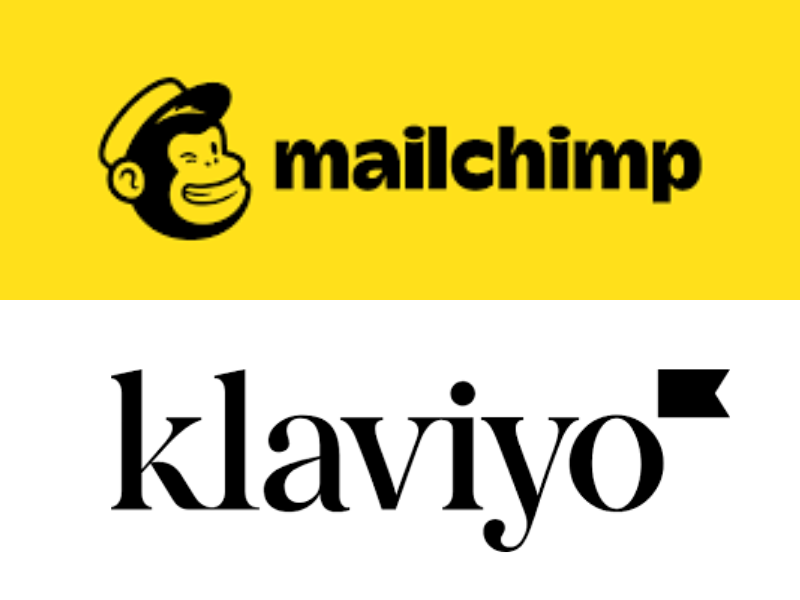英文 SEO 文章作品集(財經、金融類)
How the US-China-Taiwan Relationship Impacts World Economy and Portfolios That Might Need Your Attention
Preface
The U.S.-China relationship has recently intensified its geopolitical tug-of-war, and cross-strait relations have become increasingly tense. You may think that the international situation of these three countries is not new. There is nothing to make a fuss about.
However, it is worth noticing that the significant deterioration in U.S.-China relations recently has sparked strong major investment banks’ concerns.
The CEOs of three major investment banks, including Wall Street investment bank JP Morgan Chase, Bank of America, and Citigroup, have publicly pledged to withdraw from the China market if Beijing resorts to force against Taiwan, in accordance with the U.S. government’s request. Last year, news of Pelosi’s confirmed visit to Taiwan pushed Goldman Sachs Securities’ newly launched “Cross-Strait Risk Index” above 80. According to the latest report of the Council on Foreign Relations (CFR), China’s intensified pressure on Taiwan and the fear of a serious crisis in the Taiwan Strait ranked the highest in the world’s potential conflicts for the third consecutive year.
We can examine whether our investment portfolio may be affected in the future by knowing the tripartite relationship between China, Taiwan and the U.S.
A Brief Summary of the U.S.-China-Taiwan Relationship
The U.S., China, and Taiwan maintain a complex and sometimes tense relationship. The United States has unofficial relations with Taiwan and is committed to supporting Taiwan’s self-defense. China considers Taiwan to be a breakaway province and does not recognize Taiwan’s sovereignty. The United States maintains that the status of Taiwan is to be decided by the people in Taiwan.
Impact of US-China Tensions on Trade Relations and Global Supply Chains
Taiwan is the world’s sixteenth biggest economy, and it manufactures roughly two-thirds of all semiconductors and 90% of all chips. Additionally, Taiwan is estimated to supply 35 percent of the world’s automotive microcontrollers and 70 percent of smartphone chipsets.
On the other hand, China is the world’s largest steel manufacturer, accounting for over half of global steel production. Additionally, for certain products, China relies significantly on imports from specified nations. Australia provided more than 39% of China’s natural gas in 2021. Australia also imported nearly 73% of its oil from the United States. Other countries rely on China for critical raw materials as well. Among the 30 raw materials classified as critical by the E.U., 19 are primarily imported from China, including magnesium, rare earth, and bismuth, accounting for 98% of the E.U.’s needs.
As a result, a conflict between China and Taiwan would not only disrupt the global supply chain of semiconductors but would also have an impact on the numerous industries that rely on chips, such as e-commerce, logistics, entertainment, and other businesses, which could lose up to $1.6 trillion in revenue each year.
Economic sanctions would lead to an estimated $270 billion in trade disruptions. Not to mention the knock-on consequences of such an economic blockade or the impact of outside investors pulling out.
How the Conflict Can Affect Your Investing Portfolio
So what kind of portfolio should investors pay attention to under such an intensive trilateral relationship?
The first is ETFs directly related to Taiwan, such as iShares MSCI Taiwan. Investors who have purchased Taiwan company stocks via American Depositary Receipts (ADRs) should also pay attention to the related news in advance.
In addition, stocks that are relevant to semiconductors will be affected, including Intel Corporation (INTC), Advanced Micro Devices (AMD) Apple Inc. (AAPL), Samsung Electronics Co., Ltd. (SSNLF), and Dell Technologies Inc. (DELL) General Motors Company (G.M.), Ford Motor Company (F), and Tesla, Inc. (TSLA).
Although the war did not happen, we can see the impact of the Taiwan-China crisis on U.S. stocks from Pelosi’s visit to Taiwan. Pelosi landed in Taiwan, and the S&P 500 fell 27 points to close at 4,091. The DJ30 declined 1.2%, and the NASDAQ lost 0.2%.
The Bottom Line
The conflict between China and Taiwan would disrupt the global supply chain of semiconductors and impact the numerous industries that rely on chips. Economic sanctions would also disrupt China’s trading with other nations. As a result, it is important to be aware of this national relation and start reviewing your investment portfolio. Don’t forget to make sure that they are properly diversified and protected from risks associated with geopolitical tensions.
Here at HXFX Global, we catch up with major events that influence the global economy and individual portfolios, so you can stay ahead of the curve. Invest smartly with us by following our Facebook and Instagram!
8 Black Swan Events in 2023: Here is what you need to know
Preface
In an ever-changing global economy, investors need to stay on top of news and forecasts that could affect their portfolios. Black swan events, however, are those events that have a very low probability of occurring and are unpredictable but nevertheless happen and have a significant impact, such as 9/11 and the new pneumonia epidemic. This article will closely examine the predicted Black Swan event of 2023 by Morgan Stanley’s Matthew Horbach and his team, suggesting strategies to prepare for the possible changes in the market.
1. Despite Economic Recession, the Fed Reserve Will Not Cut Interest Rates
The U.S. economy slid into recession in 2023, but the Fed won’t cut interest rates until 2024. They’re worried about inflation being “sticky” and don’t have time to think about the slowdown of economic growth and weakness in the labor market. They want to wait for evidence proving that inflation is still falling. Morgan’s report suggests that the 10-year U.S. treasury bond will not decline much in the recession coming in 2023, and the 10-year yield will continue to be inverted to the 2-year yield on the U.S. bond.”
2. U.S. Bonds are Facing Liquidity Challenges that May Cause the Fed to Suspend Quantitative Tightening (QT)
Most investors expect the Fed’s second QT to end due to a shortage of reserves or a cut in interest rates, but the issue of U.S. bond liquidity is likely to be another obstacle to QT. The New York Fed survey in November showed that the market expects the Fed to stop tapering in Q3 2024, which is broadly consistent with our expectation that “QT will end by mid-2024 as the Fed begins to see reserve shortfalls.”
According to Morgan, higher volatility and reduced ability of the primary market to absorb U.S. debt will be the two main factors in the drying up of U.S. bond liquidity. These factors will continue into next year, creating the possibility that the Fed will have to intervene to suspend or end its program of QT.
3. Europe Central Bank (ECB) Starts to Cut Interest Rates in the Second Half of 2023
Morgan Stanley believes that the ECB’s aggressive rate hikes have caused mortgage rates to rise, and housing prices in Europe will start falling from the second half of 2022. Considering that the ECB is still continuing to tighten monetary policy, European housing prices may soften further, and the ECB may start cutting interest rates in the second half of 2023.
The report states, “In our view, global housing prices have fallen by more than 15%. If the ECB continues to tighten in 2023 Q1, we predict housing prices will fall faster, and the ECB rate will peak at 3.25% in May. It could imply a total rate drop of 150 bps in September, October, and December. By the end of 2023, the 10-year bond rate would be below 1%.”
4. Japan’s black Swan – the Bank of Japan (BOJ) Maintain Its Policy
Currently, both Japanese and overseas investors generally believe that in 2023, with the retirement of Haruhiko Kuroda, the BOJ will have some policy adjustments under the leadership of the new governor. Still, there is also a possibility that the BOJ will not be able to move toward normalization.
The report points out that the market has priced mainly in Japan’s policy shift, and the main reasons behind this expectation include:
- Growing evidence that inflation has begun to rise;
- Further deterioration in bond market liquidity.
Yet, the BOJ may fail to proceed toward normalization in the face of a weakening global economy, slowing inflation, and the potential of other central banks relaxing.
Morgan believes investors will be disappointed if this occurs, favoring a flattening of the Japanese 10-year bond yield curve. At the same time, the yen will continue to weaken and return to the rate that market has become accustomed to under yield curve control if global recession fears intensify in 2023.
5. U.K. Black Swan – Pounds Rallies
There has been a near-unanimous pessimistic outlook on British Pounds in recent months. At the same time, the market is not optimistic about the UK’s economic development in 2023. However, the report points out that three potential factors could drive the pound higher:
- A sharp drop in energy prices would be a key driver
- The return of labor supply
- Boosting consumption by using excess savings or driving up payroll growth.
6. Canada’s Black Swan – Stronger Canadian dollar
This year, Canadian housing prices and the Canadian dollar’s weakness have been hot topics. Recently, the Canadian dollar has underperformed, partly due to concerns about the housing market. According to all indicators, the housing market has peaked and is starting to fall. If the Bank of Canada tightens mortgage standards, the number of people entering Canada will increase. In this scenario, the housing market could be stabilized while the Canadian dollar is under pressure.
7. The US Federal Reserve Accepts Inflation above 2%.
Morgan Stanley reported that the approaching review of the US Federal Reserve’s 2025 monetary policy framework might lead the US Federal Reserve to consider changing its inflation target in 2023. However, the likelihood of this is low.
The new framework allows the Fed to accept deviations from 2% inflation. With stubborn inflation from 2021 to 2022, the market’s first reaction is to price in a higher inflation risk premium and slightly raise inflation expectations. A 2% inflation target change means the long-term break-even point, and the 10-year US bond yield will rise in 2023.
8. UK Bonds are Being Sold Again
Morgan believes investors are not prepared for a poor performance of UK Treasuries in 2023. The market believes that the UK Debt Management Office will work with the Treasury to issue more Treasury bills and short-term bonds, but if this does not happen, there will be another Treasuries sell-off in September 2022.
How Do Investors Get Prepared for Black Swan Events In 2023?
Diversify your portfolio
The key for investors is maintaining a diversified portfolio to weather market volatility regardless of the cause. While there’s no way to predict or avoid black swan events, having a diversified portfolio is always a defense strategy against the impact of these events. Regularly review your portfolio to see if it is achieving its diversification objectives and benefits and to ensure that you make the right decisions promptly when the market changes.
Consider Buying Safe Heaven Assets
If you haven’t invested in recognized safe haven assets, consider adding some, such as government bonds, gold, and other precious metals. These assets tend to hold their value or even increase in value when markets are experiencing turmoil.
In addition to bonds and gold, Goldman Sachs sees the yen as an ideal hedge against the risk of a recession in the U.S. JP Morgan also believes that hedging activity could significantly support the yen because the yen’s valuation remains reasonable.
Long-term Investment Horizon
Over the long run, the markets tend to move back to normal. With or without black swan events, the markets can spike up or down for many reasons, so remember not to buy or sell immediately when some major event occurs. Discipline and sticking to your long-term plan sometimes are essential mindset to success.
Epilogue
While black swan events are impossible to predict, investors can take measures to protect their portfolios. The first thing you can do is to keep up with global news and events, as they can provide important clues about potential black swan events. Diversification is critical to mitigating these events’ effects. As an intelligent investor, you should always have a long-term investment horizon to weather short-term market volatility.
Preface
The terminal rate in 2023
Fed continue to make hawkish calls for more rate increases
Inflation
These are hot topics of late.
In 2022, after the Fed raised interest rates by 3 yards four times in a row, inflation has finally dropped significantly recently. However, has this reached a normal level? How much should the interest rate be raised to effectively curb the rise in inflation? How to decide between raising and decreasing interest rates?
Whether you’re a new investor or a pro, this article will help you better understand the interest rates so you can make sure your money is working smarter.
*The benchmark interest rate varies from country to country. In this article, we are mainly referring to the announcement by the Fed.
What exactly is the interest rate?
An interest rate is an amount we must pay back in addition to the amount borrowed. So, if we borrow $1,000, we may have to repay $1,050 due to the interest rate. This is how the bank earns profit: by charging us a higher interest rate on the money we borrow.
Why do we have to pay back more than we borrowed?
Due to the time value of money, a dollar today is more valuable than a dollar tomorrow. Interest rates reflect the cost of borrowing money as well as the expected return on a loan or investment.
What are interest rate hikes/ cuts?
When the Fed wants to make borrowing money more expensive, it may raise interest rates, which means that if we borrow money, we will have to pay back more (the interest). This would tighten the economy because we will be drawn to higher interest rates, making us more likely to keep the money in the bank and less likely to borrow money or buy expensive items such as houses and automobiles, which will reduce total economic activity.
When the Fed wishes to stimulate economic activity, it may cut interest rates, making us less eager to save money in the bank. This leads to a more “heated” market.
Briefly summarize, interest rates play a vital role in the economy by influencing consumers’ and businesses’ spending and saving decisions.
When will the Fed announce the interest rate decision?
The Fed typically holds eight scheduled meetings each year and once every six weeks to make interest rate decision, which is usually announced on Thursday between 2:00 and 3:00 a.m. UTM. An economic projection will accompany every two meetings. The following chart is the 2023 interest rate decision schedule.
What data affects the Fed’s interest rate?
The Fed’s interest rate decision is mainly influenced by four primary data sources: CPI (the Consumer Price Index), the monthly rate of U.S. retail sales, the number of initial jobless claims, and the number of non-farm payrolls.
Consumer prices indicate the level of inflation, the monthly rate of U.S. retail sales measures the market’s purchasing power, and the number of initial jobless claims and non-farm payrolls reflect the labor market situation.
How do interest rate hikes/cuts affect your portfolio?
Stock
The relationship between interest rates and stocks is complex and often highly contingent on prevailing market conditions. In general, however, when interest rates are low, stock prices tend to be high, and vice versa. This is because low-interest rates make it cheaper for businesses to borrow money and expand, which drives up stock prices. Conversely, when interest rates are high, it becomes more expensive for businesses to borrow money, leading to slower growth and lower stock prices.
For example, the daily chart below shows the short-term plunge in the S&P 500 after the June 16, 2022, announcement of a 75 bps increase.
When we examine the long-term data, starting in February 2022, when the Fed started to raise interest rates, the S&P 500 displayed a steady downward trend. It was not until July that the Fed’s hawkish stance tended to moderate and prices began to bottom out.
Forex
Interest rate hikes can influence the forex market indirectly. The currency’s value may appreciate due to an increase in foreign investor demand generated by the higher interest rates. Additionally, more capital may flood into the country as investors are drawn to stronger yields. Conversely, for interest rate cuts, the currency’s value may depreciate due to a decrease in foreign investors’ demand generated by lower interest rates. Lesser capital may flow back to the country as investors seek higher yields elsewhere.
Gold Prices
It is widely believed that interest rates and gold prices are inversely related. Since gold does not yield interest, as interest rates rise, gold will become less attractive and will be redirected to other investments that yield interest, such as bonds.
However, there has been no significant correlation between rising interest rates and falling gold prices in the past. Instead, given the past patterns of the stock market and gold price reactions to interest rate hikes, the likelihood is that rising interest rates will negatively affect stock prices. As one of the risk heaven assets, a falling stock price may change the risk preference and cause fluctuation in the gold price.
The dollar is another element that influences the gold price. This is because gold is denominated in dollars. In theory, as the dollar falls in price, investors using other currencies may purchase more gold, making the gold more appealing and driving gold prices up. On the other hand, a higher dollar makes gold more expensive for these investors and imposes pressure on gold prices.
Why has the Fed Keeps Raising the Interest?
The Fed has been hiking interest rates primarily to curb inflation.
During 2022, the epidemic swept the world, coupled with the geopolitical crisis, which should have been a year of economic recovery, but instead led to a surge in energy and food prices. Therefore, in order to catch up with and curb the ever-increasing inflation, the Fed has rarely raised interest rates by 3 yards 4 times in a row!
After the Fed kept interest rates tight, according to recent data, inflation in the United States is decreasing. After exceeding a 9% annual rate in June, CPI inflation in November was 7%. Nonetheless, the Fed believes that the recent drop in the inflation rate is insufficient. Most importantly, while inflation is declining, it is still high in relative terms. There is a risk that inflation will not fall cleanly to 2%.
Therefore, the market has generally believed that the Fed’s terminal interest rate in 2023 will reach 5.125%, but senior market strategist Dominique Dwor-Frecaut believes that the Fed must raise interest rates to around 8% to bring the economy back to normal levels. Which means that, Fed still has to keep raising rate to win the war on inflation.
Epilogue
In conclusion, interest rate hikes/cuts play a vital role in the overall economy and have far-reaching effects on the stock market, house market gold price, currency, etc. While you can’t control the direction of interest rates, you can stay informed by following us on Facebook and Instagram to stay tuned with the market!
2023 Gold Price Analysis and Forecast
Preface
With the gold price rising, investors are keen to know how gold prices may look in 2023. While there is no foolproof way to predict the future, analyzing current trends and market factors can provide insight into the potential direction of gold prices. In this article, we will dive deeply into the factors affecting the 2023 gold price outlook and how investors can utilize this information to make an informed investment decision.
What Determines Gold Price?
Supply and demand
Unlike most commodities, supply and demand have a lesser impact on gold price because the supply and demand changes are relatively stable.
With the difficulty of mining increasing, gold production increases by only about 1% of the total output each year. The demand for gold is mainly in two areas: physical and investment. The former’s demand is limited by the relatively high price of gold in the industrial sector, so the correlation between the price trend of gold and the macroeconomic cycle is not apparent.
The investment demand mainly comprises official and personal investments, such as central bank reserves, gold bars/coins, gold futures/ETFs, etc. Central bank reserves play an important role because the sale or purchase of gold by central banks tends to have a psychological impact on the market, thus triggering a change in market expectations, which in turn affects the gold supply and demand situation.
U.S. dollar and Fed’s monetary policy
The U.S. dollar is the world’s reserve currency and is used in transactions all over the globe, including gold. Gold is priced in U.S. dollars. Which means that, with everything else remaining the same, a stronger dollar will usually depress the price of gold. Conversely, gold prices typically rally when the U.S. dollar weakens as market participants seek refuge in the precious metal. However, while gold typically has an inverse relationship to USD dollar, it’s not always true. Various underlying factors that drive U.S. dollars include trade surpluses, deficits, and economic conditions sometimes can be a more decisive factor in reversing this relationship, resulting in a rising dollar accompanied by the rising gold price.
Among these factors, the Fed’s monetary policy directly and strongly influences the U.S. dollar, which leads us to the third factor, inflation.
Inflation
One of the most crucial drivers of gold prices is inflation. Gold is often considered a hedge against inflation, because as the purchasing power of currency decreases due to inflation, the value of gold tends to increase. Even though we can’t predict the trend and level of inflation, the Fed will change its monetary policy to manage inflation by hiking the interest rate or shrinking the balance sheet.
To summarize, the U.S. dollar, the Fed’s monetary policy, and inflation are three interwoven elements influencing the gold price. This is why gold is presently at a record high and may maintain its bullish momentum despite aggressive Fed interest rate rises and a dominant U.S. currency. Concerns of a future recession have outweighed the attractiveness of a rising dollar.
Economic and Geopolitical Events
Finally, economic and geopolitical events like wars, natural disasters, the pandemic, or even rumors often lead to safe-haven demand for gold. Gold is seen as a safe-haven asset during macroeconomic or geopolitical stress due to its long history as a store of value.
For example, in August 2020, gold hit a record-high around $2,034 an ounce amid fears of the coronavirus spreading and causing havoc in the world economy.
Gold price predictions/forecasts in 2023 by institutions and experts?
- UBS predicts that gold will reach $1,900 per ounce by the end of 2023.
- Fat Prophets' David Lennox indicates that gold could test new highs of $2,100 per ounce in 2022.
- Fitch Solutions expects gold prices to average $1,850 per ounce in 2023, up from its previous forecast of $1,800 per ounce.
- iGold Advisor's Christopher Aaron predicts that gold will reach new all-time highs late in 2023 or 2024.
- CNBC reports that analysts believe the rally in gold prices has further to go in 2023, with spot gold reaching a six-month high at just below $1,850 per ounce.
Most of the analysis from institutions believes that gold prices will continue to rise because of macroeconomic uncertainties.
What’s the Latest Forecast and What Should We Keep an Eye on?
According to the London Bullion Market Association (LBMA) survey, analysts expect the average gold price in 2023 to range between $1,594 and $2,025 per ounce. Analysts surveyed are cautiously optimistic about the performance of gold and silver prices this year. The average analyst predicts an average gold price of $1,860 per ounce in 2023, compared to an average gold price of $1,800 per ounce in 2022.
U.S. Dollar and monetary policy are the key to affect gold prices in 2023
Of the 30 analysts surveyed, 43% believe the U.S. dollar and the Federal Reserve’s monetary policy will be the most critical factors affecting precious metals prices this year. 14% believe inflation will be the most vital factor, and 11% believe geopolitical factors will be the most crucial factor.
Emerging countries to reduce reliance on the dollar provide support for gold
According to Nicky Shiels, head of metals strategy at Swiss gold caster MKS PAMP Group, the gold price will rise as emerging nations’ central banks continue to minimize their Reliance on the dollar. According to the World Gold Council, net gold purchases by the world’s central banks reached a new high of 1,136 metric tons in 2022, accounting for 24% of global gold demand last year, including Turkey, China, Egypt, Qatar, the United Arab Emirates, and India.
Epilogue
Gold price is not determined by one element but by a combination of factors. Institutions and experts have varying predictions for gold prices in 2023, with most believing that prices will continue to rise due to macroeconomic uncertainties. This year, key factors affecting gold prices include the U.S. dollar, inflation, and geopolitical factors. Emerging nations’ central banks’ efforts to reduce their Reliance on the dollar are also expected to support gold prices.
Therefore, to make the best gold investment, stay in tune with the Fed’s monetary policy and significant economic events. Suppose you have not started any gold investment. In that case, HXFX Global is a professional CFD trader trusted by millions of clients for over ten years. We aim to build a safe and secure investment platform for every trader. Follow us on Facebook and Instagram so that you don’t miss out the latest trading news!









